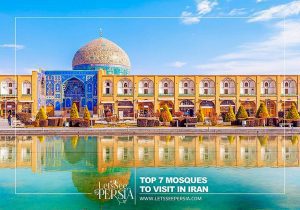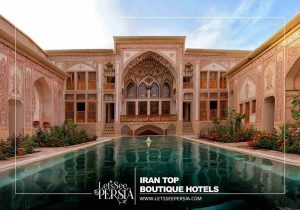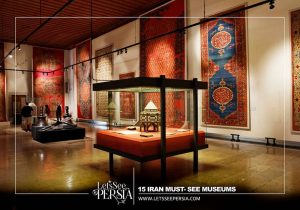Iranian UNESCO Intangible World Heritage
Iranian UNESCO Intangible World Heritage is an Iran travel blog that introduces the list of UNESCO Intangible Cultural Heritage of Iran, which includes Persian rugs, Zoorkhaneh, Naghali, Nowruz, Chogan, Kamancheh, and Yalda Night. Here, you can find tourist information about the UNESCO list with details.

Iranian UNESCO Intangible World Heritage
- UNESCO sites
- Location: Iran
- Iran Travel Blog
What is the Iranian UNESCO Intangible World Heritage?
Iranian UNESCO Intangible World Heritage list that shapes the cultural world. Persian rugs, Zoorkhaneh, Naghali, Nowruz, Chogan, Kamancheh, and Yalda night, are some heritages of this list.
Intangible heritages shape the cultural world just as much as physical ones. For example, historical and cultural monuments are a source of national pride for the people of their country and a heritage for the universe.
UNESCO has a list of Intangible Cultural Heritages that are important for the world and can be said to shape us all in some way. For a long time, people have built their cultures, performed their rituals, and been proud of who they were and who they are now.
Every day, we walk on Persian rugs, listen to music from Iran, and eat Naan (Persian bread). These “intangible” traditions are a big part of who we are as Iranians, maybe even more than the “tangible” ones. There are a lot of countries on that list, and Iran is one of them.
List of Iranian UNESCO Intangible World Heritage
1- Radif Resurrects Iranian Music- 2009
Radif is a collection of traditional melodic motifs. Persian music has always endured. Music dominated ancient Iranian civilization, including ceremonial, poetic, and martial music. Ancient Iranians had enough letters and notes to represent all natural sounds and compose many musical pieces.
2- Ritual dramatic art of Ta'zieh- 2010
Ta’ziyeh is a grief drama. Aza signifies mourning. Iran’s Shi’ite Muslim passion plays revolve around Hussain’s death and his family’s. They recount Imam Hussain and his companions’ 10-day martyrdom by their adversary. Tazi’yeh is performed on Iranian streets and in theaters during the first ten days of the Muharram month in the Arabic calendar.
3- Traditional skills of carpet weaving in Fars- 2010
Iran’s nomads live in southern Fars. Iran’s largest nomad tribe is the Qashqai. Traditional tribal women weave rugs. Each tribe weaves carpets differently, but all start the same. Nomads use horizontal ground looms for seasonal migrations. These tribes rely on wool from sheep animals. These tribes’ women are artists who make and sell gorgeous, functional carpets.
4- Traditional skills of carpet weaving in Fars- 2010
Iranian carpets are old. For centuries, Iran has made carpets. Iranians admire Persian carpets regardless of the city of weaving.
Kashi carpet weaving is an art. Remarkably, most Kashan carpet weavers are women. Kashan carpets have exquisite knots on both sides. Madder, walnut shell, grape leaves, and pomegranate peel color wool. Kashi’s parents still teach weaving.
5- Music of the Bakhshis of Khorasan- 2010
Northeast Iran’s Khorasan is home to Turk and Kurd immigrants who live among Khorasanis. These immigrants brought their traditions to northern Khorasan. The three musical sections—Asheghha, Bakhshiha, and Lutiha—are well-rehearsed. Khorasan Bakhshi music represents their nomadic history and cultural, societal, and religious views.
6- Pahlevani and Zoorkhanei Rituals - 2010
Zoorkhaneh gym. The great Iranian hero Pooriya-ye-Vali developed the first Zoorkhaneh 700 years ago, but champions and athletes’ exercises, traditions, and beliefs date back to ancient Iran. Zoorkhaneh was where heroes, typically men, started bodybuilding. They perform beautiful activities while a Morshed (Master) sings Ferdowsi’s Shahnameh martial poetry, honoring heroism and humility. Zoorkhaneh’s gym enhances the championship’s prestige.
7- Naqqāli, Iranian dramatic story-telling- 2011
Naghali is one of the oldest ways to tell stories and folklore from Iran. Naghali means “tell” in Persian. Naghals tell stories through poetry. Huge canvases are painted with stories about heroes and legends. They will hold the canvas and tell stories.
8- Traditional skills of building and sailing Iranian Lenj boats in the Persian Gulf- 2011
Open motorboats are called Lenj from launch. Southern Iranians who fish in the Persian Gulf and Sea of Oman have fashioned Lenjes out of wood for a long time. The eleven Lenj models now allow them to construct motorboats with unique attributes for varied uses. The southern Iranians’ distinctive boat-making style and uses have been designated an intangible global treasure.
9- Qalishooyan Rituals- 2012
The only solar-calendar-based religious tradition is Qalishooyan (carpet washers). Fin residents from Kashan and Khaveh Ardehal would congregate in Mashhad-e-Ardehal on the second Friday of Mehr, the first month of fall, to wash carpets with long wooden sticks. They mourned the death of a Muslim descendant and hoisted their sticks high.
10- Nowruz - Persian New Year- 2016
Iranians celebrate the New Year during Nowruz, a two-week period with many ceremonies. Nowruz, celebrated in Iran and many other nations, begins at the exact moment winter transforms into spring and is timed with great care.
Spring is the perfect time to start over because nature awakens from its winter slumber and blossoms. The ancient Iranians thought so, which is why Nowruz is precisely timed and celebrated worldwide. Iranians traditionally set the Haft-Sin, a table with seven elements that symbolize a happy year, for Nowruz and congregate around it for the new year.
11- Lavash- 2016
Iran and other countries share an intangible global heritage: tandoor-baked flatbread, which Iran calls lavash bread. Most Iranian meals include bread.
Iranians revere bread as a symbol of nature’s blessings and delicious cuisine. Iranians still pick up bread that falls on the ground, wipe it, and kiss it before putting it away.
12- Chogan (The Oldest Team Sport)- 2017
One of the oldest team sports is Chogan. From the 6th century BC until the 1st century AD, Persia (Iran) played horseback team sports. The king’s team played against the top troops in a cavalry training game. Iranians are proud of Chogan, the sport of kings. While playing, storytellers and musicians performed.
13- Art of crafting and playing with Kamancheh(musical instrument)- 2017
Kamancheh, an Iranian bowed string instrument with a variable tension bow, is employed in classical music. Kamancheh, Rebab, and Violin are Byzantine predecessors. Many famous Iranian masters of classical music play Kamancheh. Grammy-winning Kayhan Kalhor is the most famous.
14- Traditional skills of crafting and playing Dotar- 2019
Dotar—Sufis’ Instrument
The Iranian Dotar, not to be confused with the Afghanistani Dotar, is a world-old musical instrument. Dotar, Persian for two strings, describes the instrument’s shape and appearance.
15- Pilgrimage to the St. Thaddeus Apostle Monastery- 2020
St. Thaddeus Apostle Monastery in Iran’s far northwest hosts a three-day pilgrimage in July. During the journey, St. Thaddeus, one of the first apostles to preach Christianity, and St. Santukhd, the first Christian female martyr, are both honored.
This element is carried by the Armenians of Iran, Iranian-Armenians now living in Armenia, and Christians of the Armenian Apostolic Church. Before setting off for the monastery, pilgrims congregate in Tabriz.
16- Art of Negargari, or Persian Miniature Painting- 2020
Negargari, or Persian Miniature Painting, is Iran’s fifteenth UNESCO-registered Intangible Cultural Heritage. Negargari art peaked in the Safavid Era. Kamal al-din Bihzad and Reza Abbasi created stunning art in Isfahan and Qazvin’s historical buildings and mosques. The Safavid Kings supported artists and helped the community appreciate this art form for centuries.
17- Yalda Night- 2022
For Iranians and people around the world who are interested in Iranian culture, the last evening of autumn and the start of winter are times for rituals and good luck.
Yalda Night is one of the most important cultural practices of all time, even though it is not a nationally recognized holiday. Since it is based on authentic Persian culture, it has many interesting customs. For this reason, families continue to value opportunities to disconnect from technology and focus on one another.
18- Crafting and playing the Oud- 2022
In traditional music from Iran and Syria, the oud, which looks like a lute, is often played. The short neck of the instrument is placed against the performer’s thigh, and the strings are plucked with one hand while the other hand frets.
The oud is played in the Middle East and North Africa. It looks like a pear and has a sound box made of walnut, rose, poplar, ebony, or apricot wood. Making an oud can take up to twenty-five days. The first ten days are spent letting the wood dry and harden, and the next fifteen days are spent treating it with water and steam to make it last longer.
19- Turkmen-Style Needlework Art- 2022
Turkmen and Iranians of all ages and sexes wear Turkmen-style needlework. Turkmen needlework begins with tiny silk strands intertwined in three layers and twisted into a single thread, then straightened with a large needle. This new process produces glossy thread. The most common method of needlework involves piercing the fabric with a little needle while holding the preceding loop with the thumb.
20- Sericulture and Traditional Production of Silk for Weaving- 2022
Yet another Iranian UNESCO intangible world heritage exceptional. Farmers grow mulberry trees for sericulture to feed silkworms and deposit eggs. After cleaning and spinning, fibers are colored. These threads are used in fabrics, carpets, rugs, and drapes.
Weddings, funerals, and family reunions are lovely places to show off silk’s beautiful materials, which are treasured by all. The practice is a sign of cultural identity and dates back to the Great Silk Road traders. Silk commerce helped individuals from different countries share knowledge and ideas, promoting social peace.
- Contact us
- info@letsseepersia.com
- Click Here to Read More Iran Travel Blog



